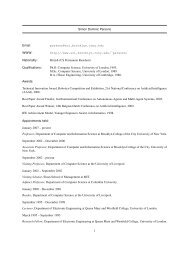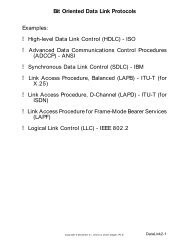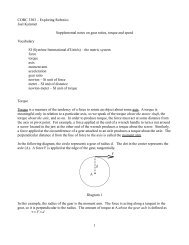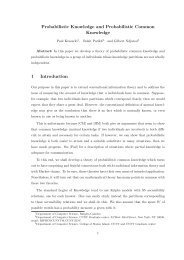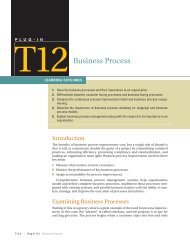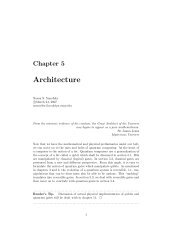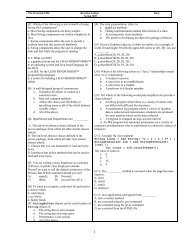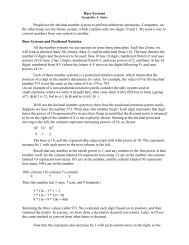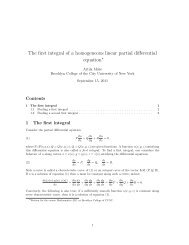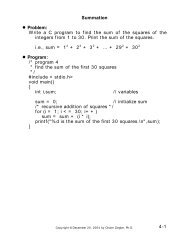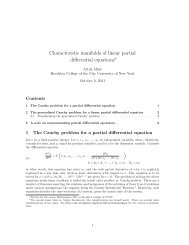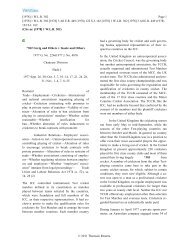CORC 3303 â Exploring Robotics Fall 2012 Section EM6 ... - CUNY
CORC 3303 â Exploring Robotics Fall 2012 Section EM6 ... - CUNY
CORC 3303 â Exploring Robotics Fall 2012 Section EM6 ... - CUNY
You also want an ePaper? Increase the reach of your titles
YUMPU automatically turns print PDFs into web optimized ePapers that Google loves.
<strong>CORC</strong> <strong>3303</strong> – <strong>Exploring</strong> <strong>Robotics</strong> <strong>Fall</strong> <strong>2012</strong><br />
<strong>Section</strong> <strong>EM6</strong> Monday 6:30-9:15 PM 3208N<br />
Final Exam: TUESDAY 12/18/<strong>2012</strong> 6 PM<br />
Room: To be announced<br />
Instructor: Joel Kammet<br />
http://www.sci.brooklyn.cuny.edu/~kammet<br />
email: kammet AT sci.brooklyn.cuny.edu<br />
Office hours: by appointment<br />
Required textbook:<br />
The <strong>Robotics</strong> Primer by Maja J. Mataric<br />
(MIT Press, 2007; ISBN 978-0-262-63354-3 )<br />
<strong>Exploring</strong> <strong>Robotics</strong> Coursepack (incl. Lab Worksheets) available at Far Better Printing, 43 Hillel Pl., and also<br />
available on the course website.<br />
A USB flash drive is required (to save your work in progress from week to week). An ordinary calculator is<br />
optional, if you need it for use during exams. Smartphones, tablets, laptops, etc., are NOT PERMITTED for<br />
any purpose during exams.<br />
Labs:<br />
Lab work is a major portion of this course and accordingly ATTENDANCE IS MANDATORY. You will be<br />
assigned to groups of two or three students for lab work (assembling and programming robots). There will be<br />
no opportunity to make up missed lab assignments.<br />
Grading:<br />
Your course grade will be based on lab assignments, homework, and examinations. Grades will be determined<br />
as follows:<br />
Lab work 30%<br />
Homework and class discussion 10%<br />
Exams and quizzes 30%<br />
Final exam 30%<br />
Preparation for classes:<br />
Read the lab worksheets BEFORE class. Unless you are thoroughly familiar with the assignment before you<br />
arrive at class, you will find it difficult to complete the lab work in the limited time available. Also, read the<br />
textbook and outside reading assignments before class. You will get more out of it if you come to class having<br />
some familiarity with the material so you can participate in a meaningful dialog.<br />
Late homeworks will not be accepted unless under extraordinary circumstances, e.g. medical emergency.<br />
Academic Integrity:<br />
All assignments that you hand in (homework and labs) must be completed by YOU. Even though you are<br />
collaborating on the labs with other students, you are expected to write your own answers, not copy them from a<br />
lab partner. And of course, homework assignments must be strictly your own work. To quote from the<br />
Brooklyn College policy on academic integrity, "If a faculty member, upon investigation, confirms that a<br />
suspected violation has occurred and/or if the student admits to the violation, the faculty member must report<br />
the violation." The complete text of the <strong>CUNY</strong> Academic Integrity Policy and the Brooklyn College procedure<br />
for implementing that policy can be found at this site:<br />
http://www.brooklyn.cuny.edu/bc/policies.
Class Lecture Topic Lab Readings<br />
8/27 Course introduction.<br />
What is a robot? What is an RCX?<br />
9/10 Fundamental concepts: basic robot<br />
control, sensing, perception, sensor<br />
space, state space.<br />
Intro to Robolab programming.<br />
9/24 Robot construction: effectors,<br />
actuators, gears, gear ratios, torque,<br />
degrees of freedom.<br />
10/1 Review of gears, gear ratios, & torque:<br />
practical application to robot design.<br />
10/10<br />
(Wed)<br />
**<br />
Locomotion: methods, effectors for<br />
movement. Trajectory vs. path.<br />
Programming with loops.<br />
10/15 Legged locomotion: gaits, center of<br />
gravity, static/dynamic stability.<br />
Program flow control: loops, forks,<br />
jumps. Conditional vs. unconditional.<br />
10/22 Sensing: types of sensors, noise,<br />
redundancy, complexity, passive vs.<br />
active sensors; touch sensors, light<br />
sensors.<br />
10/29 Robot vision: sonar, laser rangefinders,<br />
cameras.<br />
11/5<br />
**<br />
Intro to robot control: feedback (closed<br />
loop), feedforward (open loop).<br />
Lab A part 1<br />
Robot assembly; output ports;<br />
first program.<br />
Finish Lab A part 1<br />
Lab A part 2<br />
Simple movement; random<br />
numbers; coordinating<br />
movement and sound.<br />
RP ch. 1,2,3<br />
Autonomous Robots pp. 14-<br />
24 ( A)<br />
Artbots show talent (C)<br />
Finish Lab A part 2 RP ch. 4<br />
BigDog Rough-Terrain<br />
Quadruped Robot (A)<br />
Lab B part 1<br />
Gear ratios; understanding wait,<br />
stop, power levels<br />
Lab B part 2<br />
Altering robot design: speed vs.<br />
acceleration vs. precision<br />
Finish Lab B part 2<br />
Lab C part 1<br />
Input ports; touch sensors;<br />
program loops<br />
Finish Lab C part 1<br />
Lab C part 2<br />
Dancing robots<br />
Lab D part 1<br />
Program forks and jumps;<br />
introduction to light sensors<br />
Lab D part 2<br />
Obstacle avoidance; touch<br />
sensor forks; "infinite" loops;<br />
breaking out of loops<br />
11/12 Control architectures, representation. Lab E<br />
Multitasking (task split);<br />
start task, stop task<br />
11/19 Deliberative control, reactive control. Lab E (continued)<br />
Using light sensor for line<br />
following and searching<br />
11/26 Subsumption architecture, behaviorbased<br />
control, emergent behavior.<br />
Lab E (continued)<br />
Using light sensor for line<br />
following and searching<br />
12/3 Robot teams, multiagent systems Lab F<br />
Robot soccer<br />
12/10 Lab F (continued)<br />
Robot soccer<br />
** Tentative exam dates<br />
Horsepower and Torque (B)<br />
Great Robot Race video(B);<br />
Stanley: The Robot...(B)<br />
RP ch. 5<br />
Locomotion Systems in<br />
Robotic Application (C)<br />
RP ch. 7, 8<br />
A Dancing Robot for<br />
Rhythmic Social Interaction<br />
(C)<br />
RP ch. 9<br />
Then and Now: Robot<br />
Sensors (D)<br />
RP ch. 10<br />
RP ch. 11, 12<br />
RP ch. 13,14<br />
RP ch. 16, 18<br />
Basics of Robot Control (E)<br />
RP ch. 20<br />
Autonomous Mental<br />
Development (see website)



